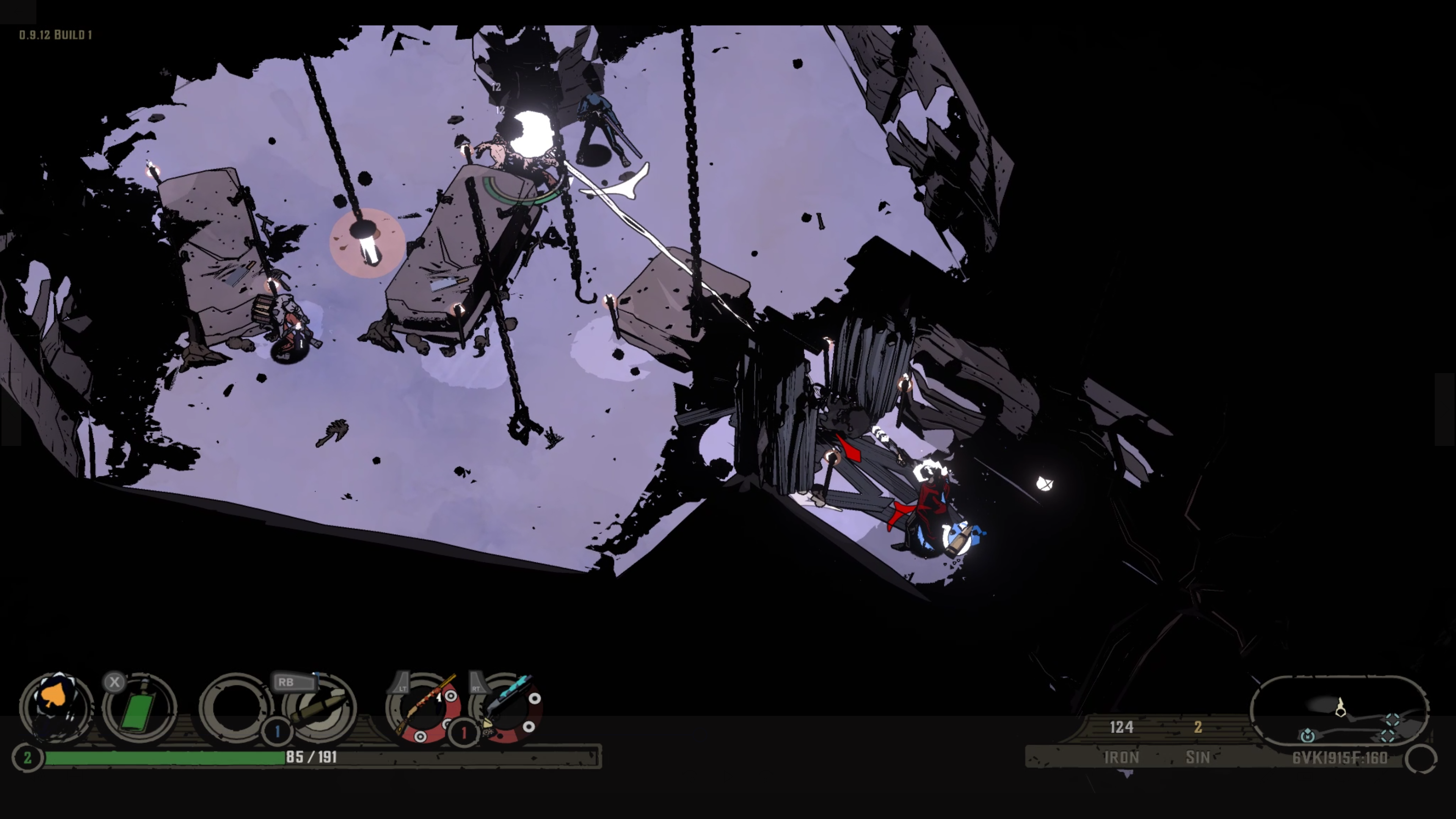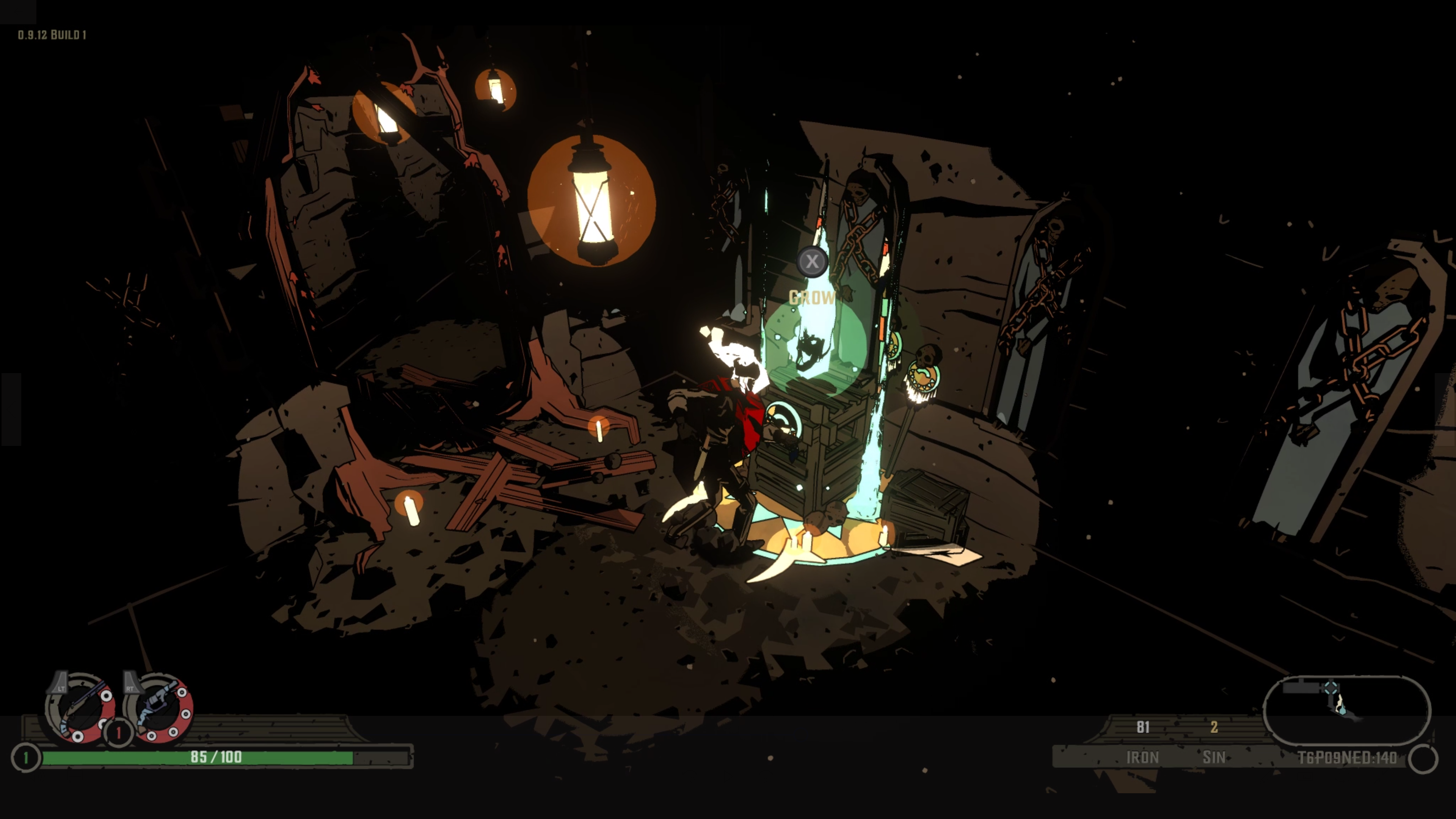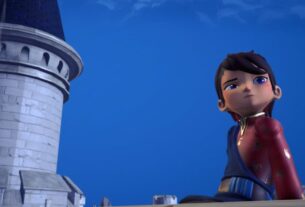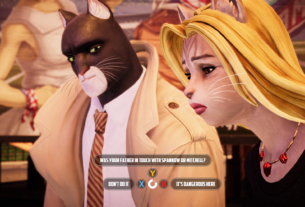
What is it? A western roguelike twin-stick shooter.
Expect to pay $20/£15.49
Developer Upstream Arcade
Publisher Raw Fury
Reviewed on i7 9700K, RTX 2080 TI, 16GB RAM
Multiplayer? No
Link: Official site
I’ve never been so pleased to see a witch. Wearing an antlered skull, and emitting the kind of presence you feel long before you see, “like a storm rolling in” according to Ron Perlman’s tar-thick voiceover, in another game she might be an end-of-level boss. In West of Dead, a roguelike set in a lugubrious wild west underworld, your interactions with her are the only persistent progress you can make.
It always begins in the bar. However deep you get through the crypts, the snowcapped wilds where dogs prowl, the deepest mines of purgatory, death spits you right back here, minus whatever weapons, upgrades and abilities you picked up on your last run. So you dust yourself off and head down into the crypts all over again, picking up a couple of level 1 firearms for company.
It’s only ever a few corners before the gunfire starts. West of Dead’s combat marries twin-stick shooting to a cover system and throws in a few extra tactical wrinkles like lights in some rooms that stun nearby enemies and loot charms that might, say, halve your reload time or recover some health if you manage to dive into cover soon after taking the hit.

It’s not a Frozen Synapse 2 or a Superhot, with one killer idea that fundamentally reinvents shooting people. It’s a simple framework, and down in West of Dead’s gloomy limbo it builds on itself at just the right pace to keep you engaged. My first two or three runs in the Crypts felt like stumbling disasters, but gradually the pace and nuance of the combat started to sink in. I noticed exactly how many hits it took from my six-shooter to stun gun-toting enemies, and how many shots from them it took to destroy the cover I tended to cower behind. I realised that the zombie-like melee foes tended to follow you back into the previous corridor, where they’re easier to takedown.
West of Dead is brilliant at telegraphing every small detail of combat, from the moment an enemy’s alerted to your presence to the moment they’ve locked their aim on you and only a frame-perfect dodge roll will stop you taking damage if you’re not behind cover. When all the timings permeate, you start to play reflexively, rather than consciously. You’re always in cover, always aware of how many empty chambers are in each gun, always looking for the next safe place to roll into. (Always lamenting yourself for downing that health flask two rooms ago instead of now, when you really need it.)
Both the controls and visual feedback are slick enough that the barrier between you and what you picture yourself doing melts away. It’s essential that a game such as this, which asks you to be OK with losing everything when you die and starting from scratch, feels both fair and consistently readable. Tick and tick.
My first two or three runs in the Crypts felt like stumbling disasters, but gradually the pace and nuance of the combat started to sink in.
Those fundamentals are built upon in each subsequent area as different enemy types—the hounds in the second map can absolutely fuck off, by the way—force you into different strategies, and thanks to that perma-death mechanic each fight feels a bit more meaningful than the last. Especially when they involve giant bags of biceps whose butcher blades can kill you in one hit, or enormous sacks of pus who sprint at you, ready to explode as soon as they get close enough to really worsen your day.
Accruing Iron and Sin makes things a bit easier. Not a folk band, strangely enough, but the two currencies found in the aftermath of fights, these can be handed over to a travelling merchant (he’s nameless and mysterious, like everyone else you meet) in exchange for gun and item upgrades, or in the latter’s case given to the witch to ‘purge’ and unlock items, some of which you keep with you after dying.
If West of Dead’s combat wasn’t sewn so artfully into that enigmatic world, though, it wouldn’t be anything like as easy to hit ‘New Run’ after another heartbreaker down the Mines. The visuals are arresting, and appear to be true cel-shaded, from objects to lighting. Hearing Hellboy’s voice while you’re inhabiting a shadowy underworld of inky black outlines feels very Mike Mignola, and the sombre guitar lines, circling crows and whiskey-gargling voiceover builds a genuine sense of atmosphere.

Perlman’s narrative crops up just frequently enough to keep West of Dead’s story on your mind: a gunslinger, navigating the afterlife without a compass, trying to figure out how to travel either east or—turns to the camera, winking—West of Dead. Snatches of conversation with NPCs, relics found in the catacombs and returned to the witch for examination, and boss fights all give glimpses into a backstory that really takes ‘show, don’t tell’ to heart.
It’s not just about beating the game, but understanding it. Those twin motivations keep frustration at bay longer than might otherwise happen in game with such unflinching disregard for your sense of progression. But, of course, frustration does eventually arrive. On the rare occasions you can point the finger at the game itself, the camera work and lighting are the culprits. Particularly when backing out of an arena, the zoom and focal point can occasionally go a bit haywire and leave you squinting at wee enemy specs. Meanwhile, back-tracking because you missed a doorway obscured in shadow really sucks the pace out of your run.

The roguelike staple of procedural generation naturally becomes a double-edged sword, too. On some runs it’s possible to blast through a given area in just a few minutes, picking up some decent weapon and character upgrades on the way. On unluckier attempts, considerable time is spent back-tracking and exploring offshoots from rooms you missed the first time. Later on the ability to teleport alleviates this dead time, which is all well and good until you die again. Still, at least you’re not mechanically traversing the same layout of corridors and arenas.
Other games have explored the same themes and mechanics as West of Dead, but rarely has it all come together with such cohesion. The fight’s always fair in West of Dead, however brutally difficult it may be, and it always feels like you’re enduring it for a reason. The drip-feed of information’s expertly judged, and the haunting Purgatory, Wyoming backdrop it plays out on has a way of getting under your skin.
Read our review policy
A fine balancing act of challenge and intrigue, with stabiliser wheels courtesy of Ron Perlman’s voice.



